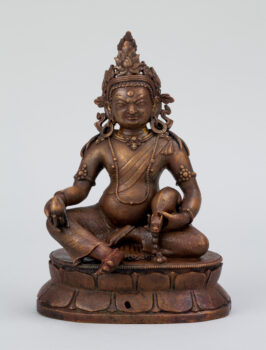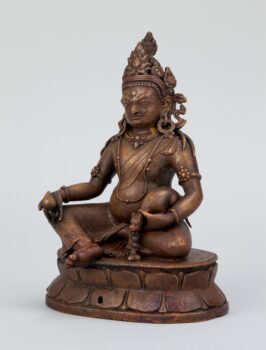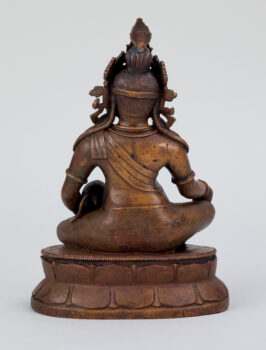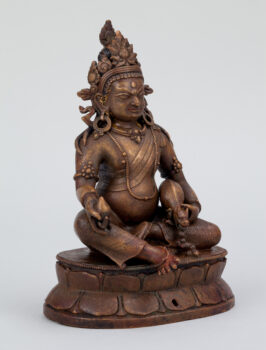Nepal
15th century




Nepal
15th century




In Vajrayana or Tantric Buddhism, Jambhala is depicted with a large belly and attributes that symbolize prosperity. In one hand he holds a mongoose, who spews jewels. Snakes can symbolize avarice and the mongoose, their nemesis, is seen as a symbol of prosperity that eliminates the “poison” of greed and brings wealth. His other hand holds a citrus fruit, a symbol essential for wellbeing.According to textual sources, Buddhism took root in Nepal during the Buddha’s lifetime. Over subsequent centuries, the Buddhist masters in the Kathmandu Valley contributed to its development and dissemination. Prominent monks founded monasteries in the Himalayas, establishing Nepal as a crucial center for Vajrayana Buddhism.
A kind of energy that can be used, individually and collectively, to effect change.
While the primary religious goal for followers of Buddhism is enlightenment, many of the practices also serve secular goals related to daily life, including ethical conduct and cultivating well-being.
Prescribed practices that carry symbolic meaning and value within a specific tradition and are intended to attain a desired outcome. Rituals are usually done as part of a ceremony or regular routine.
Get the latest news and stories from the Rubin, plus occasional information on how to support our work.